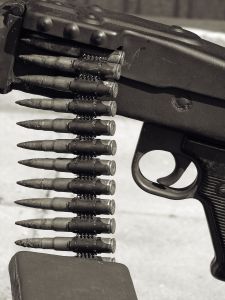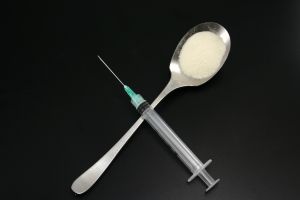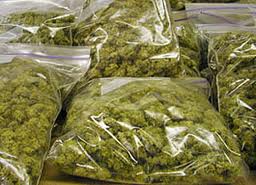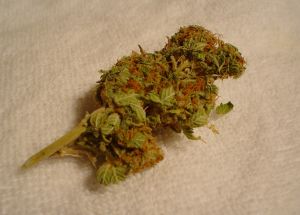 The Baltimore Police Department and the Mayor’s office has released it annual crime report, and the statistics are mixed as to whether 2012 was another step in the right direction. The city’s homicide rate rose for the first time in a few years, and this is a cause for concern from the police and the mayor’s office. In 2011 the city reported 197 murders, which is still a relatively high number considering the overall population. But last year this number actually rose ten percent to 217 murders, thus assuring that Baltimore will still be talked about with the likes of Detroit, Oakland, and St. Louis as one of the most violent cities in America. Although homicides were up it still may not be fair to lump our city in with the usual suspects of violent places. In fact, 2012 crime statistics of other violent crimes and certain property crimes show just the opposite.
The Baltimore Police Department and the Mayor’s office has released it annual crime report, and the statistics are mixed as to whether 2012 was another step in the right direction. The city’s homicide rate rose for the first time in a few years, and this is a cause for concern from the police and the mayor’s office. In 2011 the city reported 197 murders, which is still a relatively high number considering the overall population. But last year this number actually rose ten percent to 217 murders, thus assuring that Baltimore will still be talked about with the likes of Detroit, Oakland, and St. Louis as one of the most violent cities in America. Although homicides were up it still may not be fair to lump our city in with the usual suspects of violent places. In fact, 2012 crime statistics of other violent crimes and certain property crimes show just the opposite.
Police Chief Batts and Mayor Rawlings-Blake were quick to point out that in spite of the homicide spike, the total violent crime rate dropped five percent. Total violent crime includes homicide, as well as other criminal offenses such as robbery, aggravated assault, and rape. Overall there were 400 less of these incidents in 2012 as opposed to 2011. Burglary, arson, and theft numbers were also down by about five percent, and there were a total of 1,800 fewer type I crime victims this past year. Type I crime includes all of the above crimes. Gun crime also increased significantly according to the police statistics. 2012 marked the lowest number of non-fatal shootings in the city since statistics records of these incidents began in the year 2000. There was also a six percent decrease in the combined amount of shootings, carjackings, and armed robberies from 2011 to 2012. Gun arrests and gun seizures did not experience a significant change, as police arrested around 1,100 people for gun crimes and seized over 1,800 illegal firearms.
Continue reading →
 Criminal Defense Lawyer Blog
Criminal Defense Lawyer Blog


 Maryland lawmakers are set to begin the 2013 legislative session next week in Annapolis, and gun control is one topic on the minds of many representatives. State legislatures from all over the country will undoubtedly take a deep look into their respective gun laws following the Newtown, Connecticut tragedy, and Maryland is no exception. At least one representative, a democrat from Baltimore County, has already publically proposed a bill that would require active duty police officers to be deployed full time in all state public schools. There are currently school resources officers in many middle and high schools and a few elementary schools, but deploying these officers in public schools is not mandatory. School resource officers are sworn policemen and women that have arrest powers, and carry standard issue police firearms. The bill was submitted as emergency legislation, which means that if it passes it could go into effect as soon as February. It is obviously too early to tell if the bill will receive any opposition, but it seems as if the financial burden on local police jurisdictions would be the only obstacle to the bill’s passage.
Maryland lawmakers are set to begin the 2013 legislative session next week in Annapolis, and gun control is one topic on the minds of many representatives. State legislatures from all over the country will undoubtedly take a deep look into their respective gun laws following the Newtown, Connecticut tragedy, and Maryland is no exception. At least one representative, a democrat from Baltimore County, has already publically proposed a bill that would require active duty police officers to be deployed full time in all state public schools. There are currently school resources officers in many middle and high schools and a few elementary schools, but deploying these officers in public schools is not mandatory. School resource officers are sworn policemen and women that have arrest powers, and carry standard issue police firearms. The bill was submitted as emergency legislation, which means that if it passes it could go into effect as soon as February. It is obviously too early to tell if the bill will receive any opposition, but it seems as if the financial burden on local police jurisdictions would be the only obstacle to the bill’s passage. The entire state of Maryland has experienced an uptick in heroin use over the last couple years. But no city or county has seen such a dramatic rise as Ocean City. Law enforcement reported a 550 percent increase in heroin use in the city from 2011 to 2012. If the reports are accurate, more than 5 times as many people used the drug this year compared to last year. In response local cops, Worcester County Police, and Maryland State Police recently initiated a drug suppression operation entitled Operation Smackdown. A variety of drugs such as cocaine and marijuana were also targeted in the operation, but most of the arrests were for possession or sale of heroin.
The entire state of Maryland has experienced an uptick in heroin use over the last couple years. But no city or county has seen such a dramatic rise as Ocean City. Law enforcement reported a 550 percent increase in heroin use in the city from 2011 to 2012. If the reports are accurate, more than 5 times as many people used the drug this year compared to last year. In response local cops, Worcester County Police, and Maryland State Police recently initiated a drug suppression operation entitled Operation Smackdown. A variety of drugs such as cocaine and marijuana were also targeted in the operation, but most of the arrests were for possession or sale of heroin. The war on prescription drug abuse has been effective in decreasing the availability of commonly abused pills such as oxycodone and other narcotics. But as an unintended consequence, heroin use in Maryland has actually been on the rise. More people are using heroin, and state officials are reporting a significant jump in the number of deaths attributed to heroin overdoses in 2012. In fact, in the first half of 2012 heroin related overdoses increased 41 percent, with 205 deaths reported from January to July of this year compared to 145 in 2011 over the same time frame. There could be a wide variety of reasons for the jump in overdoses, which according to state officials signals a definite jump in use of the drug, but the leading factor is likely a recent crackdown on pill mills.
The war on prescription drug abuse has been effective in decreasing the availability of commonly abused pills such as oxycodone and other narcotics. But as an unintended consequence, heroin use in Maryland has actually been on the rise. More people are using heroin, and state officials are reporting a significant jump in the number of deaths attributed to heroin overdoses in 2012. In fact, in the first half of 2012 heroin related overdoses increased 41 percent, with 205 deaths reported from January to July of this year compared to 145 in 2011 over the same time frame. There could be a wide variety of reasons for the jump in overdoses, which according to state officials signals a definite jump in use of the drug, but the leading factor is likely a recent crackdown on pill mills. The Maryland Legislature is scheduled to begin its 2013 legislative session next month, and marijuana is one issue that is sure to be hotly debated. Medical marijuana supporters and personal use advocates alike hope that this year’s session makes more progress in the fight for decriminalization. Toward the end of last year’s legislative session, the head of the state’s department of health went on record saying that he would not support decriminalization as long as federal law continued to define pot as an illegal controlled substance. The department head cited concerns that his state employees could be subject to federal prosecution under the controlled substances act and there would be nothing the state could do to protect them. The head of any state agency has a duty to protect his or her employees, but the broader issue is also that state lawmakers want to protect their constituents as well. It would certainly not look good for Annapolis if Maryland citizens were being prosecuted federally for following a law that their own delegates supported and eventually passed. But supporters of marijuana decriminalization have hope that this year will be different based on two influential votes on this past Election Day.
The Maryland Legislature is scheduled to begin its 2013 legislative session next month, and marijuana is one issue that is sure to be hotly debated. Medical marijuana supporters and personal use advocates alike hope that this year’s session makes more progress in the fight for decriminalization. Toward the end of last year’s legislative session, the head of the state’s department of health went on record saying that he would not support decriminalization as long as federal law continued to define pot as an illegal controlled substance. The department head cited concerns that his state employees could be subject to federal prosecution under the controlled substances act and there would be nothing the state could do to protect them. The head of any state agency has a duty to protect his or her employees, but the broader issue is also that state lawmakers want to protect their constituents as well. It would certainly not look good for Annapolis if Maryland citizens were being prosecuted federally for following a law that their own delegates supported and eventually passed. But supporters of marijuana decriminalization have hope that this year will be different based on two influential votes on this past Election Day. Various states have recently been modifying and in some cases eradicating criminal penalties for marijuana possession and manufacturing. As a result law enforcement has seen an uptick in shipping the drug from a state where it is legal to a state that has yet to join the legalization party. Despite recent modifications in the controlled dangerous substance laws, marijuana continues to be illegal under state law, and thus local and federal law enforcement have focused a great deal of attention on intercepting packaged drugs headed toward Maryland. Recently a large number of federal search warrants were unsealed in Baltimore, allowing the public to take a look inside the process and procedure of apprehending suspects that take delivery of packaged drugs.
Various states have recently been modifying and in some cases eradicating criminal penalties for marijuana possession and manufacturing. As a result law enforcement has seen an uptick in shipping the drug from a state where it is legal to a state that has yet to join the legalization party. Despite recent modifications in the controlled dangerous substance laws, marijuana continues to be illegal under state law, and thus local and federal law enforcement have focused a great deal of attention on intercepting packaged drugs headed toward Maryland. Recently a large number of federal search warrants were unsealed in Baltimore, allowing the public to take a look inside the process and procedure of apprehending suspects that take delivery of packaged drugs. The Thanksgiving holiday week is one of America’s favorite times of the year. During the day we eat our turkey, play and watch football, and take advantage of all the Black Friday shopping sales. But the Thanksgiving week and weekend is also known as a popular nightlife time. In fact, the Wednesday before Thanksgiving is the single most popular bar night of the year, and the Friday and Saturday after are not far behind. And whenever there is a party, you can be sure that police are not far behind to come crash it. The Maryland State Police recently made an attempt to crash the holiday week party by ramping up patrols across the state’s highways. Police were specifically targeting the roads in and out of popular nightlife spots and conducted almost 9,000 traffic stops over the holiday weekend. Out of the 9,000 traffic stops, nearly 100 resulted in an arrest for DUI. Close to 60 people were arrested or cited with drug offenses by state troopers, and over 100 were arrested for other crimes. Police also reported that 3 guns were confiscated during the traffic stops.
The Thanksgiving holiday week is one of America’s favorite times of the year. During the day we eat our turkey, play and watch football, and take advantage of all the Black Friday shopping sales. But the Thanksgiving week and weekend is also known as a popular nightlife time. In fact, the Wednesday before Thanksgiving is the single most popular bar night of the year, and the Friday and Saturday after are not far behind. And whenever there is a party, you can be sure that police are not far behind to come crash it. The Maryland State Police recently made an attempt to crash the holiday week party by ramping up patrols across the state’s highways. Police were specifically targeting the roads in and out of popular nightlife spots and conducted almost 9,000 traffic stops over the holiday weekend. Out of the 9,000 traffic stops, nearly 100 resulted in an arrest for DUI. Close to 60 people were arrested or cited with drug offenses by state troopers, and over 100 were arrested for other crimes. Police also reported that 3 guns were confiscated during the traffic stops. It was like stealing candy from a baby. At least it was for the police officers who recently arrested a Dundalk man for possession of marijuana with intent to distribute. Early in the morning hours employees at a Pennsylvania gas station observed the man placing unidentified candy bars in his pockets. The employees called 911 and law enforcement began searching the immediate area for a man matching the description. The man was spotted within ten minutes by local cops, who detained the Maryland man. After confirming the identification of the candy bar thief, police officers arrested the man for shoplifting. Search incident to arrest revealed two candy bars worth a total of $3.58. It is unclear whether the candy bars were king size, or if the gas station simply charges almost two dollars per bar. Nonetheless, the man would have likely avoided a trip to the local jail had he only been found in possession of candy, but that was not the case.
It was like stealing candy from a baby. At least it was for the police officers who recently arrested a Dundalk man for possession of marijuana with intent to distribute. Early in the morning hours employees at a Pennsylvania gas station observed the man placing unidentified candy bars in his pockets. The employees called 911 and law enforcement began searching the immediate area for a man matching the description. The man was spotted within ten minutes by local cops, who detained the Maryland man. After confirming the identification of the candy bar thief, police officers arrested the man for shoplifting. Search incident to arrest revealed two candy bars worth a total of $3.58. It is unclear whether the candy bars were king size, or if the gas station simply charges almost two dollars per bar. Nonetheless, the man would have likely avoided a trip to the local jail had he only been found in possession of candy, but that was not the case. A Delaware resident was recently arrested on Maryland’s Eastern Shore after he allegedly led police on a multi county high speed chase. State Police troopers along with the Kent County Sheriffs Department collaborated in apprehending the suspect, who was charged with multiple traffic infractions and crimes. Some of the more serious crimes included fleeing and eluding, DUI, and negligent driving. The chase originated near Chestertown, which is the county seat, and largest city in Kent County. At about 2 in the afternoon, law enforcement received a call about a suspected drunk driver. Sheriffs responded to the area of the call, and one officer observed a Dodge Charger that matched the description in the call speeding along Route 213. The Officer initiated a traffic stop and made contact with the driver of the Charger. The contact with the Officer did not last long, as the driver took off at a high rate of speed.
A Delaware resident was recently arrested on Maryland’s Eastern Shore after he allegedly led police on a multi county high speed chase. State Police troopers along with the Kent County Sheriffs Department collaborated in apprehending the suspect, who was charged with multiple traffic infractions and crimes. Some of the more serious crimes included fleeing and eluding, DUI, and negligent driving. The chase originated near Chestertown, which is the county seat, and largest city in Kent County. At about 2 in the afternoon, law enforcement received a call about a suspected drunk driver. Sheriffs responded to the area of the call, and one officer observed a Dodge Charger that matched the description in the call speeding along Route 213. The Officer initiated a traffic stop and made contact with the driver of the Charger. The contact with the Officer did not last long, as the driver took off at a high rate of speed.  More campaign and lobbyist money was spent in 2012 than in any other election year in American history. Whether it was the estimated 3 billion dollars spent on the presidential race, or the 90 million dollars spend on expanding Maryland’s gambling laws, this Election Day will not soon be forgotten. And for those who have been fighting the decades long battle to legalize marijuana, this Election Day may go down in history as the vote that started it all. Two states, Colorado and Washington have passed laws that will effectively legalize the recreational use of marijuana. The Colorado law makes it legal for adults over the age of 21 to possess up to an ounce of pot, and authorizes homeowners to have up to 6 plants for the purposes of cultivating the drug. The Washington law also authorizes carrying up to an ounce, but requires that users buy their stash from state licensed distributors rather than growing it at home. Both states make still maintain that it is illegal to drive while under the influence of the drug, with Washington establishing a blood THC limit. Smoking marijuana in public will still be illegal and violators are subject to citation and fines similar to a public consumption of alcohol violation. Supporters of the propositions, which will turn into law within the next few months, were out in force celebrating the victory. Meanwhile, the opposition was left questioning the law’s supposed benefits as well as the complications that will accompany implication of the state laws.
More campaign and lobbyist money was spent in 2012 than in any other election year in American history. Whether it was the estimated 3 billion dollars spent on the presidential race, or the 90 million dollars spend on expanding Maryland’s gambling laws, this Election Day will not soon be forgotten. And for those who have been fighting the decades long battle to legalize marijuana, this Election Day may go down in history as the vote that started it all. Two states, Colorado and Washington have passed laws that will effectively legalize the recreational use of marijuana. The Colorado law makes it legal for adults over the age of 21 to possess up to an ounce of pot, and authorizes homeowners to have up to 6 plants for the purposes of cultivating the drug. The Washington law also authorizes carrying up to an ounce, but requires that users buy their stash from state licensed distributors rather than growing it at home. Both states make still maintain that it is illegal to drive while under the influence of the drug, with Washington establishing a blood THC limit. Smoking marijuana in public will still be illegal and violators are subject to citation and fines similar to a public consumption of alcohol violation. Supporters of the propositions, which will turn into law within the next few months, were out in force celebrating the victory. Meanwhile, the opposition was left questioning the law’s supposed benefits as well as the complications that will accompany implication of the state laws.